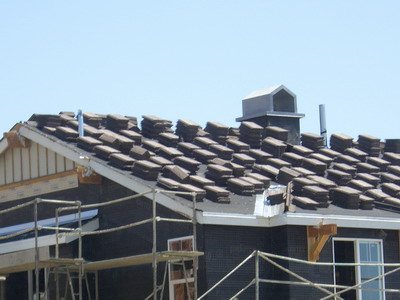 |

A roof membrane is an additional layer of roofing that provides added protection, insulation, and sound-deadening features. Applied over flat and shingled roofs, the roof membrane can be made of three membrane roofing materials; thermo set, thermoplastic, or Modified Bitumen.
 |  |  |
The PVC roof membrane is the longest used of all membrane roofing materials, and constitutes about 10 percent of membrane roofing procedures in America today. Its proven track record is result of its many important attributes, which include high resistance to puncture and impact, flame resistance, leak prevention, durability, UV reflection, low temperature flexibility and high temperature tolerance. Although all three kinds of membrane roofing materials provide these features, vinyl membrane roofing is most used for its aesthetic appeal, and modified bitumen membrane roofing is weaker than the other two kinds.
Membrane roofing eliminates the need for gravel roofs, which are extremely difficult to maintain and repair. Membrane roofing is manufactured in pieces of up to 50 feet long, meaning that many roofs can be wrapped in a single piece for simple installation and minimal maintenance. Most suited to flat roofs, membrane roofing allows you to shrink wrap your roof and never have to worry about roof leaks again. If you are considering installing membrane roofing in your house or office, speak with one of our contractors today. They can advise you whether or not membrane roofing is suitable to your roof, provide further information, and can proceed with any installation procedures according to your needs.
Roof shingles can be displaced or damaged by extreme and violent weather conditions. However, they can be replaced quite easily without any demanding roof work. Follow the following steps to learn how to roof shingle replace on your roof. If you are unsure about anything, consult a Roof 101 contractor before proceeding, as flawed roof shingles replacement can lead to serious consequences.

|